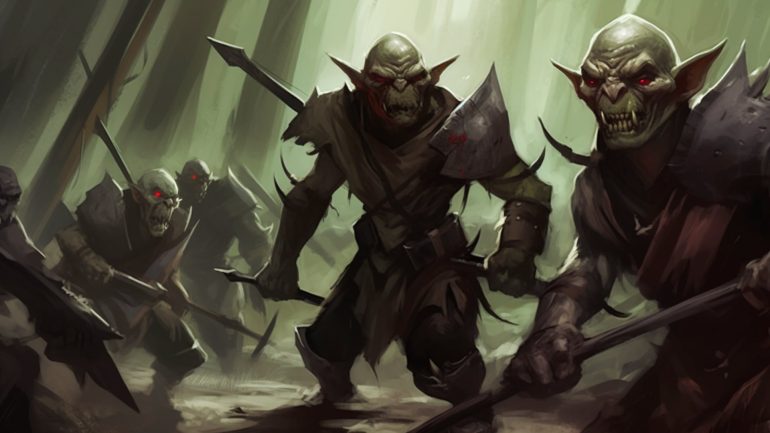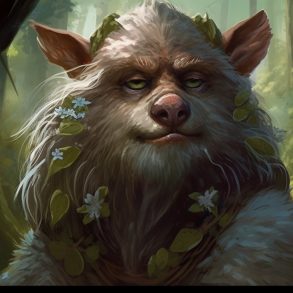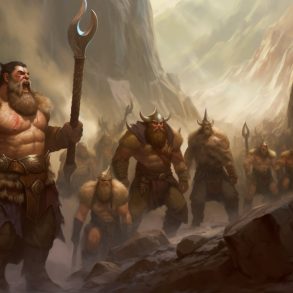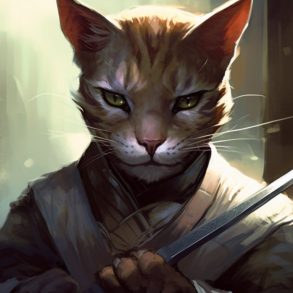Iconic and mischievous foes of low-level parties for the last 45+ years, goblins are well known by all players but, not all players may know they can be a goblin too! The Goblin player race option was originally published in Volo’s Guide to Monsters (VGtM) under the ‘Monstrous Adventurers’ section before being republished in Eberron: Rising from the Last War (ERLW) and Guildmaster’s Guide to Ravnica (GGR). Most recently an updated version was published in Mordenkainen Presents: Monsters of the Multiverse (MPMM), this is a separate version and does not overwrite the original, it just presents a different way of playing a goblin using more current design conventions.
From the Feywild and Fallen Empires
Goblins are a subterranean folk, making their homes in caves and caverns although, they don’t have the same mining connotation similar-living races like kobolds do. Originally hailing from the Feywild, goblins can be found in every corner of the multiverse and are often found amongst their goblinoid kin, hobgoblins and bugbears. Whilst many goblins have fallen under the evil influence of the god Maglubiyet, they originally served in the court of the Queen of Air and Darkness, and many strive to find their own path in life, free to lead the adventurous life their heart may desire.
Whilst in a lot of worlds goblins are seen as lesser creatures, or outright evil, in others they have a much different place. The biggest example of this is in the world of Eberron, where goblinoids as a whole were the dominant empire for thousands of years before losing their grasp after winning a costly war. The remnants of this empire are extremely skilled and disciplined, their weaponsmiths are even superior to the greatest artificers of the land.
Going for the Knees: Playing a Goblin
Playing a goblin gives you the following traits:
Ability Scores – Dex +2 Con +1
Size – Small
Creature Type – Humanoid
Speed – 30 ft.
Age – Goblins reach adulthood at age 8 and live up to 60 years.
Darkvision – You have darkvision out to a range of 60ft, allowing you to see in dim light as if it were bright light, and in darkness as if it were dim light. Whilst relying on your darkvision, you can only see colors as various shades of grey.
Fury of the Small – When you damage a creature with an attack or a spell and the creature’s size is larger than yours, you can cause the attack or spell to deal extra damage to the creature. The extra damage equals your level. Once you use this trait, you can’t use it again until you finish a short or long rest.
Nimble Escape – You can take the Disengage or Hide action as a bonus action on each of your turns.
Languages – You can speak, read, and write Common and Goblin.
Going for the Ankles: Playing an MPMM Goblin
Playing a goblin from MPMM gives you the following traits:
Ability Scores – You can increase one ability score by 2 and a different score by 1, alternatively you can increase three different ability scores by 1.
Size – Small
Creature Type – Humanoid, you are also considered a goblinoid for any prerequisite or effect that requires you to be a goblinoid.
Speed – 30 ft.
Age – The typical life span of a player character in the D&D multiverse is about a century, assuming the character doesn’t meet a violent end on an adventure.
Darkvision – You have darkvision out to a range of 60ft, allowing you to see in dim light as if it were bright light, and in darkness as if it were dim light. Whilst relying on your darkvision, you can only see colors as various shades of grey.
Fey Ancestry – You have advantage on saving throws you make to avoid or end the charmed condition on yourself.
Fury of the Small – When you damage a creature with an attack or a spell and the creature’s size is larger than yours, you can cause the attack or spell to deal extra damage to the creature. The extra damage equals your proficiency bonus.
You can use this trait a number of times equal to your proficiency bonus, regaining all expended uses when you finish a long rest, and you can use it no more than once per turn.
Nimble Escape – You can take the Disengage or Hide action as a bonus action on each of your turns.
Languages – Your character can speak, read, and write Common and one other language that you and your DM agree is appropriate for the character.
We hope that you’ve enjoyed hanging out in the cavern with the goblin as much as we did. Have you played a goblin yet? Are you planning to? If you want to learn more about other race options, check out our races section, or if you want to understand the world’s greatest roleplaying game better, then check out our how to play section. Until next time remember, the bigger they are, the harder they fall!






